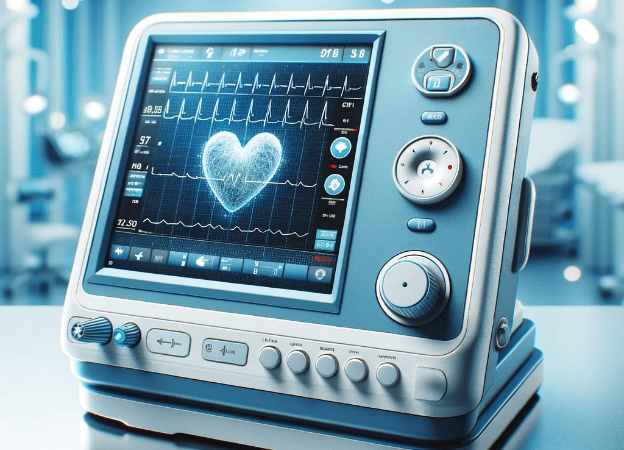I. Introduction
A. Overview of ISO 13485 Training
ISO 13485 Training provides specialized education on the ISO 13485 standard, focusing on quality management systems for medical devices. This training equips professionals with the knowledge to implement, maintain, and improve a QMS that meets regulatory and industry requirements. It covers essential aspects such as documentation, risk management, and regulatory compliance, helping organizations ensure their products meet high-quality standards and regulatory expectations.
B. Importance of ISO 13485 Training for medical device professionals
ISO 13485 Training is crucial for medical device professionals as it ensures they understand and apply the quality management principles specific to the medical device industry. This training enhances their ability to manage compliance, improve product safety, and meet regulatory requirements. It empowers professionals to effectively contribute to their organization’s quality system, ensuring products are safe, effective, and of high quality, which is vital for patient safety and regulatory compliance.
II. Understanding ISO 13485
A. Definition and scope of ISO 13485
ISO 13485 is an international standard for quality management systems specific to the medical device industry. It outlines requirements for a comprehensive QMS to ensure that medical devices and related services consistently meet regulatory requirements and customer expectations. The scope includes all stages of a product’s lifecycle, from design and development to production, installation, and servicing, focusing on maintaining high standards of safety and quality.
B. Evolution and history of the standard
ISO 13485 was first published in 1996 as a harmonized standard for medical devices, evolving from the earlier ISO 9001 standard. Its latest version, ISO 13485:2016, reflects updates to align with international best practices and regulatory changes. The evolution of the standard has been driven by the need for more rigorous quality management in the medical device industry, incorporating lessons learned from previous versions and adapting to regulatory changes.
C. Core principles and objectives of ISO 13485
ISO 13485 is based on core principles of risk management, customer focus, and continuous improvement. Its objectives include ensuring consistent product quality, meeting regulatory requirements, and enhancing customer satisfaction. The standard emphasizes risk management throughout the product lifecycle, robust documentation practices, and effective corrective and preventive actions. By adhering to these principles, organizations can improve their quality management processes and ensure the safety and effectiveness of medical devices.
III. Benefits of ISO 13485 Training
A. Enhancing knowledge and skills in quality management
ISO 13485 Training enhances participants’ knowledge of quality management principles specific to the medical device industry. It provides insights into best practices for developing and maintaining a robust QMS, managing risk, and ensuring product compliance. Participants gain practical skills to implement the standard effectively, leading to improved quality control, more efficient processes, and better overall management of medical device production and service.
B. Ensuring compliance with regulatory requirements
ISO 13485 Training helps professionals understand and adhere to regulatory requirements for medical devices. It covers essential aspects of compliance, including documentation, risk management, and regulatory expectations. By mastering these requirements, organizations can avoid non-compliance issues, reduce the risk of regulatory penalties, and ensure that their products meet the necessary standards for safety and efficacy, thereby maintaining market access and enhancing customer trust.
C. Improving organizational efficiency and product quality
Effective ISO 13485 Training leads to improved organizational efficiency and product quality. By implementing the principles learned, organizations can streamline their quality management processes, reduce waste, and enhance product consistency. The training helps identify and address areas for improvement, leading to more effective management of quality and risk. As a result, organizations benefit from higher-quality products, increased customer satisfaction, and more efficient operations.
IV. Key Components of ISO 13485 Training
A. Overview of ISO 13485 requirements
ISO 13485 Training provides a comprehensive overview of the standard’s requirements, including those related to the development, implementation, and maintenance of a QMS. Participants learn about key requirements such as risk management, documentation practices, and regulatory compliance. Understanding these requirements is crucial for ensuring that medical devices meet safety and quality standards throughout their lifecycle.
B. Detailed understanding of quality management system (QMS) principles
Training includes a detailed exploration of QMS principles, such as process approach, risk management, and continuous improvement. Participants learn how to apply these principles to manage quality in the medical device industry effectively. The training emphasizes the importance of integrating QMS principles into daily operations to enhance product quality and ensure compliance with ISO 13485 standards.
V. Types of ISO 13485 Training Programs
A. Classroom training vs. online training
ISO 13485 Training can be delivered through classroom sessions or online courses. Classroom training offers face-to-face interaction and hands-on exercises, fostering immediate feedback and discussion. Online training provides flexibility and convenience, allowing participants to learn at their own pace and from any location. Both formats have their benefits, and the choice depends on the organization’s needs and resources.
B. Workshops and seminars
Workshops and seminars offer focused, interactive training on specific aspects of ISO 13485. These sessions often involve practical exercises, group discussions, and expert presentations. Workshops provide in-depth exploration of particular topics, while seminars offer broader overviews. Both formats are valuable for gaining specialized knowledge and addressing specific challenges related to ISO 13485 implementation.
C. Certification courses and specialized training
Certification courses and specialized training programs provide in-depth education on ISO 13485, often culminating in a certification exam. These programs are designed for professionals seeking formal recognition of their expertise. Specialized training may cover advanced topics or specific aspects of ISO 13485, such as auditing or risk management, offering targeted learning to address particular needs within the medical device industry.
VI. Selecting the Right ISO 13485 Training Program
A. Identifying training needs and objectives
To select the right ISO 13485 Training program, organizations should first identify their specific training needs and objectives. This involves assessing current knowledge gaps, regulatory requirements, and desired outcomes. Clearly defining these needs helps in choosing a program that aligns with organizational goals and provides relevant and practical training to address the identified areas.
B. Evaluating training providers and course content
When selecting a training provider, evaluate their credentials, reputation, and course content. Ensure that the provider offers up-to-date, comprehensive training aligned with ISO 13485 standards. Consider factors such as instructor qualifications, course materials, and participant reviews. A reputable provider with relevant experience will deliver high-quality training that meets organizational needs and regulatory requirements.
C. Considering accreditation and certification options
Consider whether the training provider offers accredited or certified courses, as this can add value and credibility. Accreditation ensures that the training meets industry standards and is recognized by relevant authorities. Certification options can provide formal recognition of expertise and may enhance the professional qualifications of participants. Choose a provider that offers accredited programs to ensure the highest quality of training.
VII. Implementing Knowledge from ISO 13485 Training
A. Integrating training insights into the QMS
After completing ISO 13485 Training, integrate the insights and knowledge gained into the organization’s QMS. This involves applying best practices learned, updating policies and procedures, and ensuring that all team members are informed. Effective integration enhances the QMS, improves compliance, and supports continuous improvement efforts within the organization.
B. Conducting internal audits and assessments
Conduct internal audits and assessments to evaluate the effectiveness of the QMS and ensure ongoing compliance with ISO 13485. Use the knowledge gained from training to perform thorough audits, identify non-conformities, and implement corrective actions. Regular audits help maintain compliance, improve processes, and ensure that the QMS remains aligned with the standard’s requirements.
C. Continuous improvement and ongoing training needs
ISO 13485 requires continuous improvement of the QMS. Use insights from training to drive ongoing enhancements and address emerging challenges. Regularly review and update processes, conduct additional training as needed, and stay informed about updates to the standard. Continuous improvement ensures that the organization remains compliant, maintains high-quality standards, and adapts to changes in the medical device industry.
IX. Conclusion
A. Recap of the importance of ISO 13485 Training
ISO 13485 Training is essential for professionals in the medical device industry, providing the knowledge and skills needed to implement and maintain effective quality management systems. It ensures compliance with regulatory requirements, enhances product quality, and supports organizational efficiency. Training empowers professionals to manage quality effectively, contributing to the overall success of their organizations.
B. Encouragement to pursue comprehensive training
Pursuing comprehensive ISO 13485 Training is highly beneficial for both individual professionals and organizations. It equips participants with critical skills and knowledge, enhances compliance, and improves quality management practices. Investing in thorough training supports professional development, fosters a culture of quality, and drives continuous improvement, leading to better outcomes and sustained success in the medical device industry.
C. Final thoughts on the impact of training on organizational success
ISO 13485 Training significantly impacts organizational success by improving quality management practices, ensuring regulatory compliance, and enhancing operational efficiency. Well-trained professionals contribute to the effective implementation of ISO 13485, leading to higher-quality products, increased customer satisfaction, and a stronger competitive position. Committing to ongoing training and development supports long-term success and resilience in the dynamic medical device industry.




